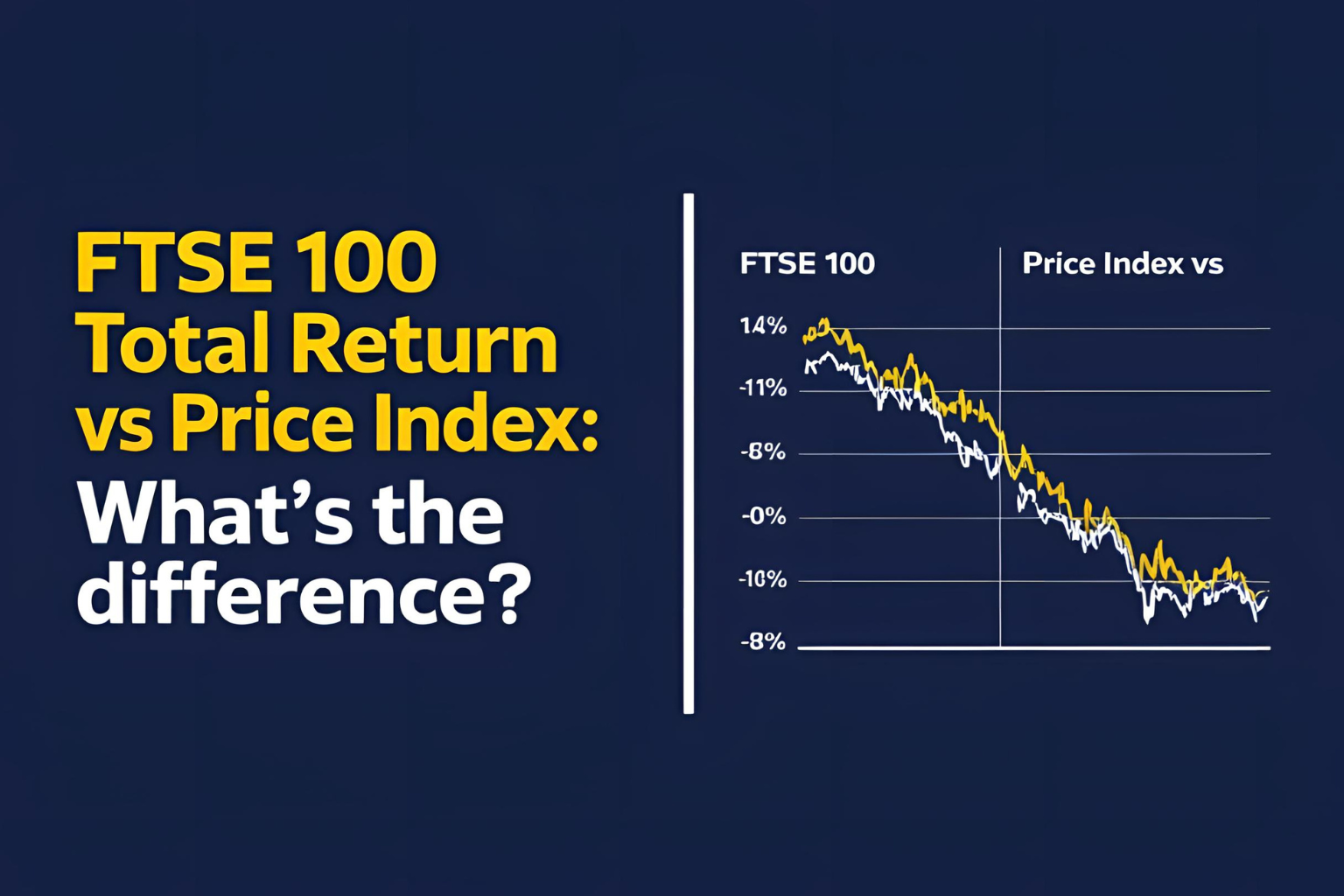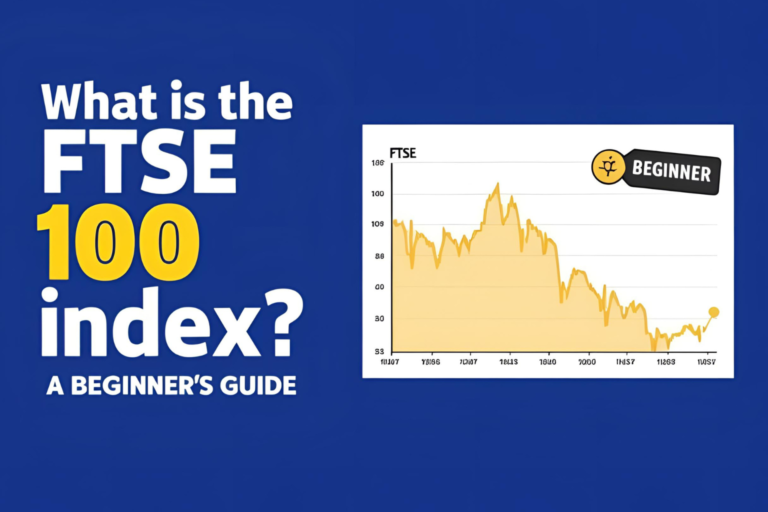FTSE 100 Total Return vs Price Index: What’s the Difference?
Introduction:
When tracking the performance of the FTSE 100, you may come across two different versions: the Price Index and the Total Return Index. While they may sound similar, the difference between them can significantly impact your interpretation of performance and investment results. In this article, we’ll break down what these terms mean and why the FTSE 100 Total Return gives a more complete picture for investors.
What Is the FTSE 100 Price Index?
The FTSE 100 Price Index reflects only the movement in the share prices of the 100 companies in the index. It does not include dividends paid by the companies.
- If a company’s share price increases, the index rises.
- If prices fall, the index declines.
- Dividends are ignored in this calculation.
This is the version most commonly quoted in news reports and financial websites.
What Is the FTSE 100 Total Return Index?
The Total Return Index accounts for:
- Price changes, and
- Dividends reinvested back into the index.
This provides a more accurate measure of long-term investor returns because it reflects both capital gains and income from dividends.
For example, if the price index rises by 5% in a year, and dividends yield another 3%, the total return could be 8%, assuming reinvestment.
Why the Difference Matters
- Dividend Impact: FTSE 100 companies are known for their high dividend payouts. Ignoring dividends underestimates the actual return.
- Long-Term Investing: Over time, dividends can account for a significant portion of total returns.
- Benchmarking: If you’re comparing a fund’s performance against the FTSE 100, make sure you’re using the same type of index.
Example Comparison
Let’s say the FTSE 100 started the year at 7,500 points and ended at 7,800. That’s a 4% gain on the Price Index.
However, if those companies paid dividends worth another 3%, the Total Return would show around 7% growth, assuming reinvestment.
Which Index Should You Track?
- Use the Price Index for short-term market movement tracking.
- Use the Total Return Index when analyzing investment performance over time, especially if dividends are reinvested.
Conclusion
Understanding the difference between the FTSE 100 Price Index and Total Return Index helps you make more accurate assessments of performance. For long-term investors, the Total Return version gives a more realistic picture by including dividends, which can make a big difference in wealth accumulation.
FAQs
1. What does the FTSE 100 Total Return Index include?
It includes both the capital gains from share price increases and income from dividends, assuming reinvestment.
2. Is the Total Return Index higher than the Price Index?
Yes, over time the Total Return Index is usually higher due to the compounding effect of reinvested dividends.
3. Which FTSE 100 index do news sites report?
Most news and financial sites report the Price Index, not the Total Return Index.
4. Can I invest in the Total Return Index?
You can’t invest directly, but many index funds and ETFs aim to replicate the performance of the Total Return Index.
5. Why is the Total Return Index better for long-term investing?
Because it shows the full benefit of reinvested dividends, which significantly boosts long-term returns.




